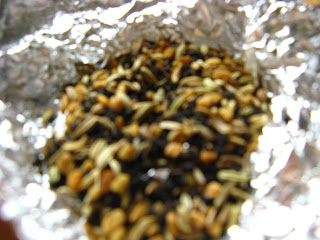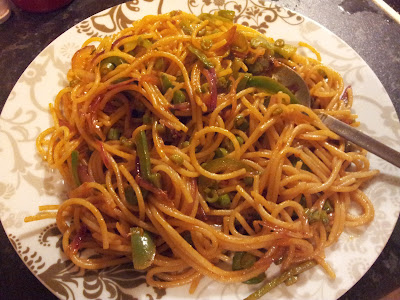Idli
Idli is a speciality of the southern part of India. It is easy to cook and is a very healthy dish. This is the staple diet for people in South India and is fondly cherished by people all over India as a delicacy. Idli can be eaten raw, with chutney, with sambhar, as upma or fried with onions/capsicum/tomatoes.
I have researched a lot on how to get the soft idlis, and here is the mix that I use.
Ingredients
For 28 Idli
1 bowl fine Rawa
1 and 1/2 bowl course Rawa
1 bowl yoghurt (natural)
1 teaspoon salt
1 teaspoon baking soda (please dont use baking powder. We need to use baking soda)
1 bowl luke warm water
1/2 tea spoon yeast
1 table spoon gunpowder (Gunpowder is a special South Indian spice made from a mix of dried lentils and other spices)
Method
Take a bowl and add 1 bowl of fine Rawa to it. Then add 1 and 1/2 bowl course Rawa. Add 1 teaspoon salt and 1 teaspoon baking soda. Add 1 cup natural yoghurt. Mix well.
Dissolve 1/2 teaspoon of yeast in 1 table spoon of luke warm water and mix the dissolved yeast to the above mix.
Finally add 1 bowl of luke warm water to the mix and mix well.
If you will cook the idlis in a Microwave, then keep a little extra water. If you will cook the idlis in a gas idli cooker, then keep the water little less.
Leave the mix to stand for 15-20 minutes.
After the batter is fermented for 15-20 minutes, mix well. Grease the Idli cooker (gas or Microwave). Add the Idlis to the stand. Cook the Idli at High setting of Microwave for 10 minutes. Should you use the gas pressure cooker, keep the flame at the highest and cook for 10 minutes.
In either case, ensure that the cooker has enough water at the bottom of the Idli stand, so that there is enough steam for the idlis to cook.
Tip: You can add roasted lentils like roasted chana daal to the Idli mix to add taste.





